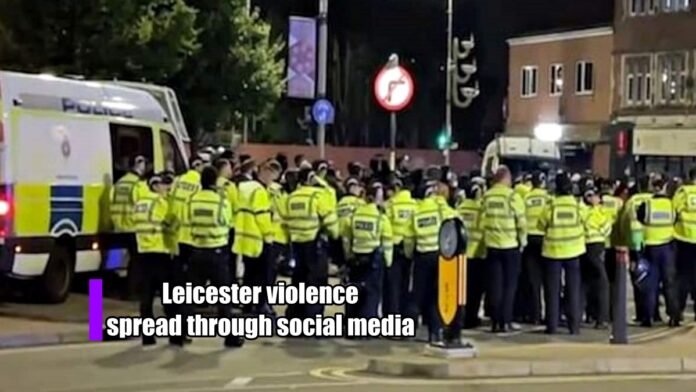
London: This year, the United Kingdom witnessed an unprecedented event in Leicester during August and September. In this, there was violence between Hindu and Muslim communities. Which included mass mobilization, vandalism, and physical attacks. According to the 2011 census, 13 percent of Muslims, 12.3 percent of Hindus, 22.3 percent of Indian origin, and 1.9 percent of Pakistani origin live in Leicester. Overall in the UK as of 2017, the Muslim population was 5 percent and the Hindu population was 1.5 percent.
Over time, unrest between the British Hindu and Muslim communities is increasing here. The latest incident took place when there was a cricket match between India and Pakistan on 28 August. Violent clashes took place between the cricket fans after this match. Although such conflicts are not new, the growth and widespread nature of the unrest spooked even the authorities.

However, a closer look at the violence reveals that the uproar was not confined to the streets, but was also fought in cyberspace. In which there was a combination of major mixtures of rumors and propaganda, violence and emotions. A report by the Network Contagion Research Institute (NCRI) suggests that malicious and fabricated statements, fake information, and Islamophobic and Hinduphobic messages played a role in the violence. Such online activities spill over into real-world violence, vandalism, and intimidation.
Social media violence
To assess violence, NCRI collected data from Twitter, YouTube, TikTok, and Instagram for the time period between 27 August (the day before India vs Pakistan cricket match, where India won) and 19 September. It employed open source intelligence collection (OSINT), time series analysis, natural language processing, network analysis, and sentiment analysis to identify key events, information operations, malicious information, and influence networks.
The NCRI said the findings suggested that the continuing violence in Leicester was not perpetuated through biological outrage. It explained how this violence was organized and erupted. The main reason for this is the use of social media platforms as a weapon to spread malicious fake information. The NCRI said that violence generated through social media platforms is regularly progressing from inter-group conflict to an episodic phenomenon, which now threatens vulnerable communities around the world.




















































